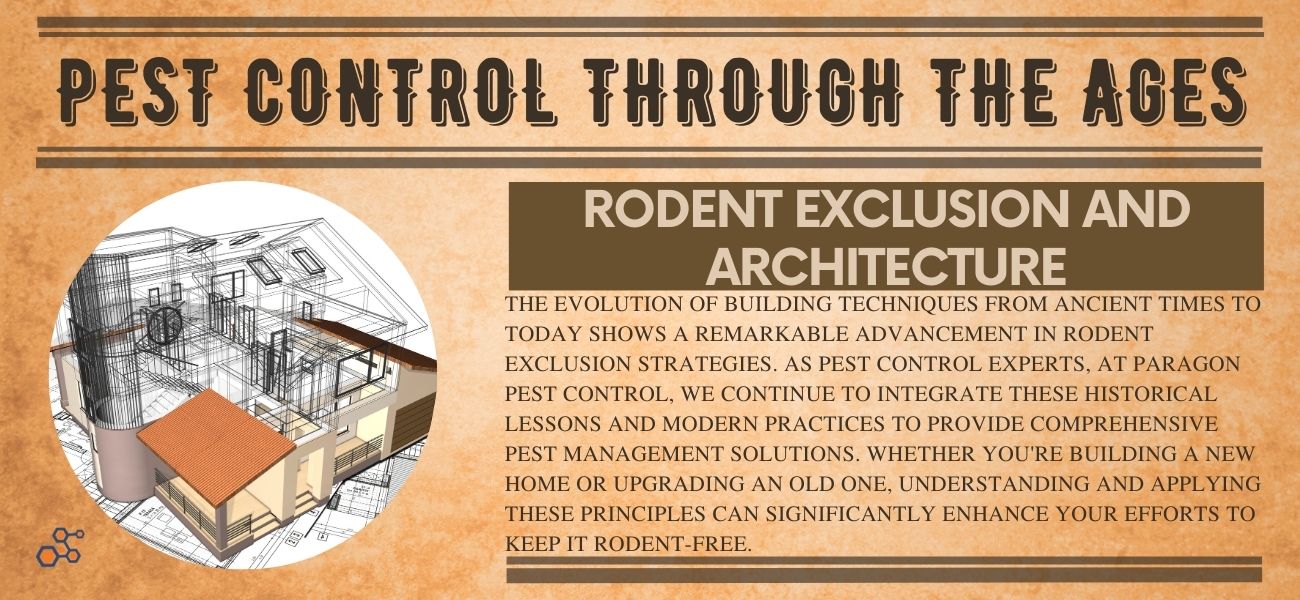Pest Control Through the Ages: The Evolution of Rodent Exclusion in Building Designs
Throughout history, humans have sought innovative ways to protect their dwellings from pests, particularly rodents. From ancient civilizations to modern urban developments, the battle against these persistent intruders has influenced architectural styles and building techniques. This blog explores how past societies attempted to prevent rodent infestations and how modern building codes and practices have built upon these early foundations to enhance pest exclusion.
Ancient and Medieval Innovations
In ancient times, building materials and methods were primarily influenced by available resources and environmental factors. For instance, the Romans used tightly fitted stones and developed advanced drainage systems to deter rodents, understanding that water attraction could lead to pest infestations. Meanwhile, in medieval Europe, the use of raised foundations became popular as a means to prevent rats and mice from burrowing into homes.
Mud and straw, commonly used in many traditional societies, were less effective against pests. However, the integration of certain plants known to repel rodents into the mud mixture helped improve their deterrent properties.
Transition to Modern Techniques
As urbanization increased, so did the challenges of keeping buildings rodent-free. The Industrial Revolution introduced new building materials like concrete and steel, which provided better durability and fewer entry points for rodents compared to wood and stone. Moreover, the development of organized waste management and public sanitation during the 19th century helped reduce rodent populations in urban areas.
Modern Building Codes and Techniques
Today, building codes specifically address pest exclusion. Techniques such as sealing openings, using rodent-proof materials for lower parts of buildings, and proper landscaping to avoid providing shelter for pests are standard. Innovations in home and building designs also incorporate integrated pest management (IPM) principles, focusing on preventing pests from entering in the first place.
For example, modern homes and buildings often include:
Sealed Entry Points: Advanced sealants and exclusion materials that fill gaps around pipes, vents, and cable lines to prevent rodent entry.
Improved Drainage Systems: Enhanced drainage prevents water accumulation near foundations, discouraging rodents from nesting.
Landscaping Controls: Strategic placement of trees and shrubs to avoid close contact with the building, reducing the likelihood of rodents climbing into the structure.
Conclusion
The evolution of building techniques from ancient times to today shows a remarkable advancement in rodent exclusion strategies. Modern building codes not only reflect a better understanding of rodent behavior but also incorporate advanced technologies that improve the livability and safety of our environments.
As pest control experts, at Paragon Pest Control, we continue to integrate these historical lessons and modern practices to provide comprehensive pest management solutions. Whether you're building a new home or upgrading an old one, understanding and applying these principles can significantly enhance your efforts to keep it rodent-free.
For more insights into effective pest control strategies or to schedule a consultation, visit Paragon Pest Control's website.


